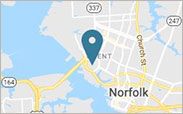/test01/test-t4-media/media/evms_public/departments/doctor_of_medicine/doc-of-medicine-hero-2000X1149.jpg)
Doctor of Medicine, MD
Master clinical skills and gain foundational knowledge to treat patients in a program that puts community service first.
Doctor of Medicine
Explore Doctor of Medicine
Why choose EVMS?
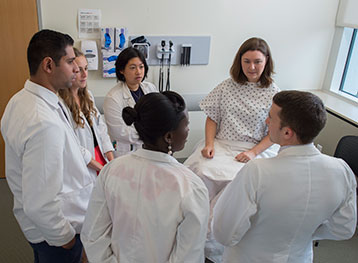
See patients on Day 1
Spend your first day working with standardized patients in the Sentara Center for Simulation and Immersive Learning.
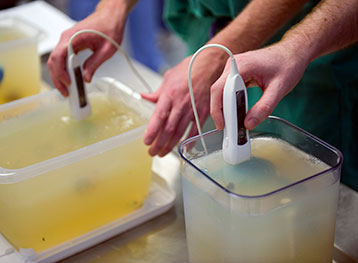
Early ultrasound training
Use the field’s leading technologies in your first weeks with our robust ultrasound curriculum.
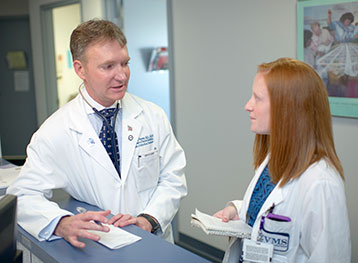
Varied training environments
Present and take an active role in rounds while working with diverse patient populations at several hospital locations.

See patients on Day 1
Spend your first day working with standardized patients in the Sentara Center for Simulation and Immersive Learning.

Early ultrasound training
Use the field’s leading technologies in your first weeks with our robust ultrasound curriculum.

Varied training environments
Present and take an active role in rounds while working with diverse patient populations at several hospital locations.

See patients on Day 1
Spend your first day working with standardized patients in the Sentara Center for Simulation and Immersive Learning.

Early ultrasound training
Use the field’s leading technologies in your first weeks with our robust ultrasound curriculum.

Varied training environments
Present and take an active role in rounds while working with diverse patient populations at several hospital locations.
Community-Engaged Learning Initiatives
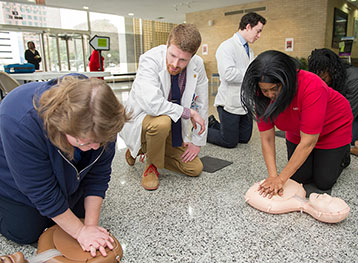
First Response
Lead Bystander CPR courses, promote Community Stroke Awareness and teach lifesaving skills with Stop the Bleed.
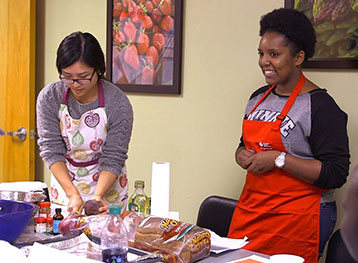
Nutrition & Exercise
Help establish healthy fitness and nutrition habits for children at P.B. Young, the homeless with LIFT and those with chronic illnesses, such as diabetes and hypertension, with CHOW.
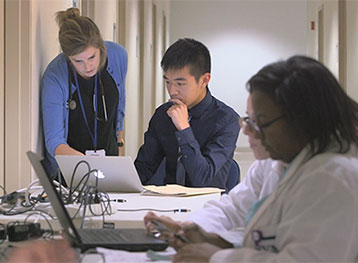
Underserved & Health Inequities
Provide care to low-income or uninsured residents, assist with rehabilitation and address community health concerns to help those without easy access to healthcare.

First Response
Lead Bystander CPR courses, promote Community Stroke Awareness and teach lifesaving skills with Stop the Bleed.

Nutrition & Exercise
Help establish healthy fitness and nutrition habits for children at P.B. Young, the homeless with LIFT and those with chronic illnesses, such as diabetes and hypertension, with CHOW.

Underserved & Health Inequities
Provide care to low-income or uninsured residents, assist with rehabilitation and address community health concerns to help those without easy access to healthcare.

First Response
Lead Bystander CPR courses, promote Community Stroke Awareness and teach lifesaving skills with Stop the Bleed.

Nutrition & Exercise
Help establish healthy fitness and nutrition habits for children at P.B. Young, the homeless with LIFT and those with chronic illnesses, such as diabetes and hypertension, with CHOW.

Underserved & Health Inequities
Provide care to low-income or uninsured residents, assist with rehabilitation and address community health concerns to help those without easy access to healthcare.
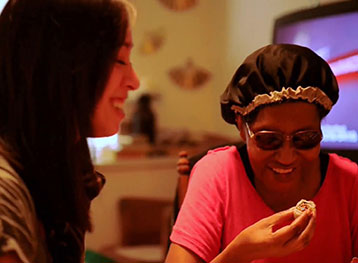
The Elderly and Chronically Ill
Determine areas where diseases are prevalent with Hotspotters and visit with older area residents in Beyond Clinic Walls.
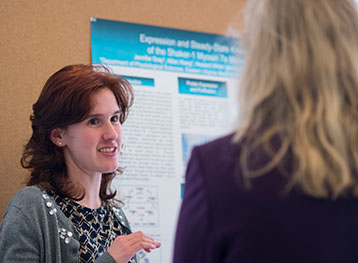
Infectious Disease
Assess the regional health district’s performance through our HIV Treatment Quality Improvement and STI Focused Community Needs Assessment.
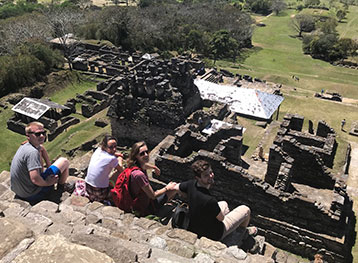
Global Health Equity
Earn a Spanish Bilingual Clinical Certification with Medical Spanish or a French Clinician Certification with Medical French, or work with local refugees in Refugee Health.

The Elderly and Chronically Ill
Determine areas where diseases are prevalent with Hotspotters and visit with older area residents in Beyond Clinic Walls.

Infectious Disease
Assess the regional health district’s performance through our HIV Treatment Quality Improvement and STI Focused Community Needs Assessment.

Global Health Equity
Earn a Spanish Bilingual Clinical Certification with Medical Spanish or a French Clinician Certification with Medical French, or work with local refugees in Refugee Health.

The Elderly and Chronically Ill
Determine areas where diseases are prevalent with Hotspotters and visit with older area residents in Beyond Clinic Walls.

Infectious Disease
Assess the regional health district’s performance through our HIV Treatment Quality Improvement and STI Focused Community Needs Assessment.

Global Health Equity
Earn a Spanish Bilingual Clinical Certification with Medical Spanish or a French Clinician Certification with Medical French, or work with local refugees in Refugee Health.
Earn a dual degree
Earn a dual degree
 or
or
MD/MPH
Tackle healthcare issues on a broader scope in our dual MD/MPH program in partnership with Old Dominion University.
Discover MD/MPHMD/MBA
Gain business expertise while earning your MD with our MD/MBA program in partnership with the College of William & Mary.
Discover MD/MBAStudent life
Faculty-student relationship
Our faculty are committed to student excellence. Our third-year students meet one-on-one with our vice dean to receive career guidance.
Wellness program
Our student and physician wellness program promotes resilience in our graduates throughout their medical careers.
Care-based teaching
We value practical application in teaching; our lessons are placed in the context of real-world practice at every opportunity.
Graduation rates
Nearly 9 out of 10 EVMS medical students graduate on time in four years.
Meet our faculty
Need a step up? Prepare to matriculate into medical school with our one- or two-year Medical Master’s programs.





/test01/test-t4-media/media/evms_public/departments/doctor_of_medicine/McRae_Fiora_web_.jpg)
/test01/test-t4-media/media/evms_public/departments/doctor_of_medicine/Vision-Quest_REMEDYRemedy-570X379.jpg)
/test01/test-t4-media/media/evms_public/departments/doctor_of_medicine/Abuhamad-248X346.jpg)
/test01/test-t4-media/media/evms_public/departments/doctor_of_medicine/Britt_LD-248X346.jpg)
/test01/test-t4-media/media/evms_public/departments/doctor_of_medicine/Romero_Cynthia-246X348.jpg)
